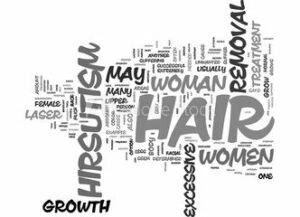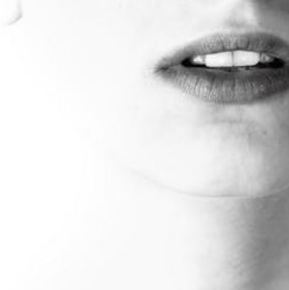“Hirsutism | Superfluous Hair Growth” is a brief overview.
Most people may not be familiar with the word Hirsutism. Let’s talk about excessive facial hair, unwanted hair, superfluous hair growth due to hormones or obesity and you have an audience.
This is more of a problem for women. Facial and chest hair, in particular, are considered unnatural, undesirable, and unacceptable.

Hirsutism | Problematic Hair Growth
One “stray” hair may be normal and easy to get rid of even if it tends to grow back. It’s a different thing altogether when hair growth is excessive.
This means hair is out of control and in less than desirable places. An example is the face (usually upper lip and chin) and chest for most women.
A broader definition of hirsutism includes male-pattern hair growth due to an unusual amount of the androgen hormone. This hormone is dominant in men although present in women to a lesser degree.
Hair growth, in this case, is thick and dark. It’s in contrast to the more normal downy-like (peach fuzz) hair, which is hardly noticeable.
Is My Condition Hirsutism?| Find Out.
Get proper diagnosis from an endocrinologist. Otherwise, you may be treating the symptom without knowing what the underlying cause is.
Generally speaking, hirsutism is due to a medical condition. It is best to find the root cause and start treating that. You should then take steps to eliminate the symptoms.
If the condition is caused by a hormonal imbalance, your endocrinologist will advise you about the necessary treatment.
This way, you’ll be in a better position to know when to focus on treating the outward appearance. You will also know which method best suits you.
Superfluous hair growth may occur during pregnancy, menstruation, puberty and menopause. These cases are not considered to be hirsutism. Things get back to normal once these occurrences have passed.
Live With… | Or Without the Outward Appearance.
Excessive hair growth is not a problem to everyone, men or women. In other words, some individuals and cultures actually embrace it.
This is a stress point for others which can lead to health issues, insecurity complexes, and antisocial behaviors. The best way to make a decision is to be informed.
There may not be a universally agreed on cure for hirsutism; however, there is no shortage of recommendations to alleviate the condition.
In terms of the outward appearance, one or a combination of treatments may serve to bring peace of mind. On the other hand, this could be frustrating.
Results are not usually apparent and may take several treatments before it is evident that a solution is found.
Regardless of social norms or even as a result of social norms, you want to control your outward appearance. You may be influenced or pressured to change, but the choice is yours.
People who care about you may get involved in helping you to find a solution. Be open minded. This is beneficial and may have a positive end result.
Treat That Stubborn Hair. | Hirsutism.
Several methods are used to treat unwanted or undesirable hair growth. Two suggestions are electrolysis and laser, especially from the point of view of an electrologist and laser hair removal specialist.
Do your research and find what works for you. Affordability may be one concern. Bear in mind that the long-term benefits will be the most cost effective.
Some methods are temporary and may not be expensive such as shaving. Hair will grow back more quickly but is less stimulating. Hair is cut off at whatever point it protrudes above the surface of the skin.
The structure of hair is tapered, thicker at the root and pointed at the end. When hair that has been shaved continues to push through the skin, it would have already lost the tapered tip.
This is why it is assumed that hair grows back thicker after shaving. It does not!
Some methods, though very common, may enhance the problem. These tend to stimulate the blood flow which supplies nourishment to hair follicles.
Extra blood is supplied to the area as a means of protection when hair is tweezed (plucked) or waxed. This results in stronger, thicker hair.
Other temporary methods may include products of some kind such as creams and manual or electronic devices.
Naturally, the permanent or long-term treatment methods will be more expensive initially. Decide what is right for you and get started.
Stay on Course. | Finish the Race!
So, here’s the thing: You now have a better understanding of what hirsutism is. Simply put, it’s superfluous hair growth caused by hormonal imbalance.
This doesn’t bother some people while others worry themselves to death.
You or someone you know may experience symptoms. Have an endocrinologist diagnose the condition. Get the necessary medical and “cosmetic” treatment.
Here are some questions to ask when treating symptoms:
- Are these permanent or temporary results?
- What are the timeframe and frequency?
- Is there no cost, low cost or is it outrageously expensive?
- Is it acceptable or unacceptable by you or society?
You can enjoy better health, self-image (if this is problematic for you), and peace of mind. Be informed. Make a decision for yourself or help someone through the process.

I hope this short article, “Hirsutism | Superfluous Hair Growth” has helped you in some way.
There is a vast amount of information on the subject and related matter. This is only an introduction, especially for those who are at a loss and need to be pointed in the right direction.
This site is primarily about problematic hair growth. Feel free to leave your questions and comments below. I will do my best to address them.